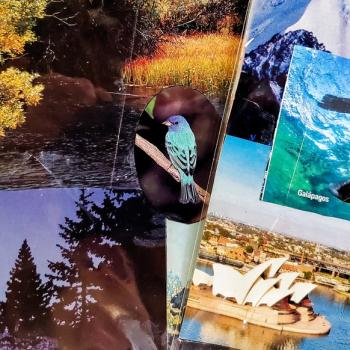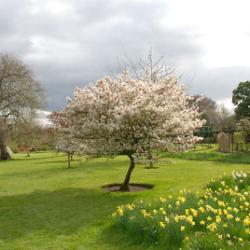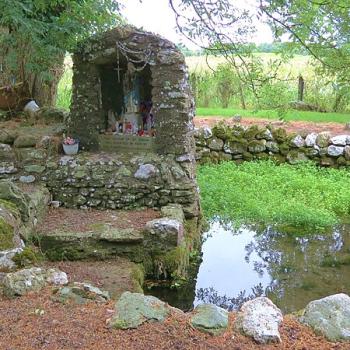
Introduction
Contemporary Paganism is deeply rooted in a European past. For all of us who have some European heritage, those ancestors were pagan before the introduction of Christianity. Although modern Pagans draw on many non-European sources including the ancient beliefs and practices from Egyptian, Roman and Greek, Asian, Native American and African cultures, the native religions of pre-Christian Europe are our own heritage.
In this series, I will use the Wheel of the Year used by many modern Pagans to explore seasonal practices that you can incorporate into your life. I am using the generic descriptions of the seasons as if they apply to everyone. I know they don’t. If you don’t live in North America or Europe, or if you live in certain areas of the United States, some of these descriptions of the seasons won’t make sense to you. Feel free to adjust my suggestions about Ostara based on your own environment.

Ostara (Spring Equinox)
Twice a year, the day and the night, the light and the dark are in balance. Ostara (March 20) is when the growing light finally comes into balance with the darkness and begins to overpower it. This is the time of spring’s return; the joyful time, the seed time, when life bursts forth from the earth and the chains of winter are broken. It is a time of balance, when all the elements within us can be brought into a new harmony. The Prince of the Sun stretches out his hand and Kore, the Dark Maiden, returns from the Land of the Dead, cloaked in the fresh rain, with the sweet scent of desire on her breath. Where They step, the wildflowers appear; as they dance, despair turns to hope, sorrow to joy, want to abundance.
This is the first of the Pagan celebrations of fertility. Even if there is still snow on the ground, we can sense the flowers and the trees preparing to burst forth. In agricultural societies, it may still be too early to plant, but now is the time to begin preparing the soil, gathering together the seed, making plans for the coming year. Even those of us living in the city without access to a formal garden may be drawn to the plants and flowers springing up around us.
The Christian celebration of Easter and the Jewish Passover are tied to this holiday as their dates are determined by the date of the Equinox. Easter, which is named after the Saxon Goddess of fertility, Eostre, is rich in the pagan symbolism of eggs and newborn animals (bunnies, especially). The colors of this season are all the pastels, especially the pale green of the budding trees. If you wander through the forest, you may catch a glimpse of the maiden and the young god chasing each other in the distance.
This is also the time to celebrate the reunion of Demeter and Persephone after their long winter’s separation. It can also be a time for us to celebrate our mothers and daughter and our other women friends.
Ostara Rituals
Those of us who have been cooped up for months can use this holiday to prepare for our coming release. Just as it is too early to plan in most parts of the northern hemisphere, Ostara is a time of planning for the coming spring. It can also be a time to plan for our coming springing forth. Now we can prepare the ground, get our own vaccines, and help our neighbors get theirs.
Now we can plant the seeds of reconnection that we will harvest later in the year. Spring is a traditional time to clean. We can do the same by clearing away the cobwebs that have accumulated in our homes and our lives, so as the light expands, we’ll be ready to throw open the doors and invite others in.
You can make cleaning into its own ritual. Begin at the front door and move clockwise around your home. You can cast a circle enclosing your entire house within that sacred space. Put lighted candles or other symbols of the directions at each of the cardinal points. Invoke the god and goddesses of your choice, perhaps the domestic deities, like Hestia, Frigg, Demeter and Persephone or your own ancestors. As you move through your home, bless each room. Consider livening up the space with fresh flowers or greens or light sage or sweetgrass to chase away the stale air of winter. Don’t forget to release the circle if you cast one.
Your Turn
How will you celebrate this time of year? Are you planning a garden or another new project? Are you making plans for the harvest of all your quarantine sacrifices? Let us know in the comments.
Join Dr Mary Ann’s Academy to receive free periodic emails about my newest projects and get a copy of Dr Mary Ann’s Commonplace Book.


















